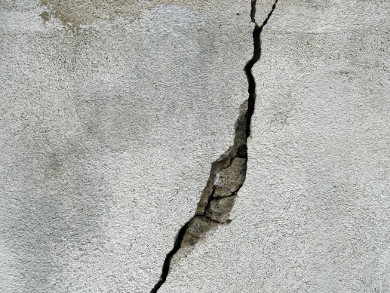Concrete can easily crack when under tension. If the cracks grow, they can lead to corrosion of the steel reinforcement, which can collapse the concrete structure. Repairing cracks can be extremely difficult in underground or liquid retaining structures. Engineers often use a larger than necessary amount of steel reinforcement within a concrete structure. However, this is an expensive solution as steel prices are high.
Henk Jonkers, Delft University of Technology, The Netherlands, and colleagues have created concrete with self-healing capacities. They embed calcite-precipitating Bacillus bacteria together with calcium lactate in biodegradable plastic capsules and add these to the wet concrete mixture. If concrete cracks and water gets in the cracks, the alkaliphilic bacteria produce limestone. This fills up the crack and makes the concrete more durable.
Currently, the researchers are optimizing the process and investigating how the self-healing is affected by the various deterioration mechanisms involved, such as sulfate attacks or temperature fluctuations. For residential buildings, the traditional repairing of cracks seems to be the most economically attractive solution at the moment. However, according to the team, the bacterial concrete is already ideal for constructing underground retainers for hazardous waste.
- Self-healing of Concrete by Bacterial Mineral Precipitation,
Delft University of Technology, 2015.
http://www.citg.tudelft.nl/en/research/projects/self-healing-concrete
Also of Interest
- Characterization of sustainable bio-based mortar for concrete repair,
M. Guadalupe Sierra-Beltran, H. M. Jonkers, E. Schlangen,
Constr. Build. Mater. 2014, 67, 344–352.
DOI: 10.1016/j.conbuildmat.2014.01.012 - A mathematical model for bacterial self-healing of cracks in concrete,
S. V. Zemskov, H. M. Jonkers, F. J. Vermolen,
J. Intell. Mater. Syst. Struct. 2012, 25, 4–12.
DOI: 10.1177/1045389X12437887




